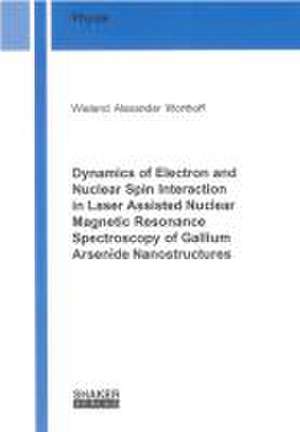Dynamics of Electron and Nuclear Spin Interaction in Laser Assisted Nuclear Magnetic Resonance Spectroscopy of Gallium Arsenide Nanostructures
Autor Wieland Alexander Worthoffen Limba Engleză Paperback – 6 noi 2011
Preț: 278.93 lei
Nou
Puncte Express: 418
Preț estimativ în valută:
53.37€ • 58.16$ • 44.97£
53.37€ • 58.16$ • 44.97£
Carte indisponibilă temporar
Doresc să fiu notificat când acest titlu va fi disponibil:
Se trimite...
Preluare comenzi: 021 569.72.76
Specificații
ISBN-13: 9783844004953
ISBN-10: 3844004955
Pagini: 170
Ilustrații: 36 farbige Abbildungen
Dimensiuni: 146 x 208 x 17 mm
Greutate: 0.24 kg
Editura: Shaker Verlag
ISBN-10: 3844004955
Pagini: 170
Ilustrații: 36 farbige Abbildungen
Dimensiuni: 146 x 208 x 17 mm
Greutate: 0.24 kg
Editura: Shaker Verlag
